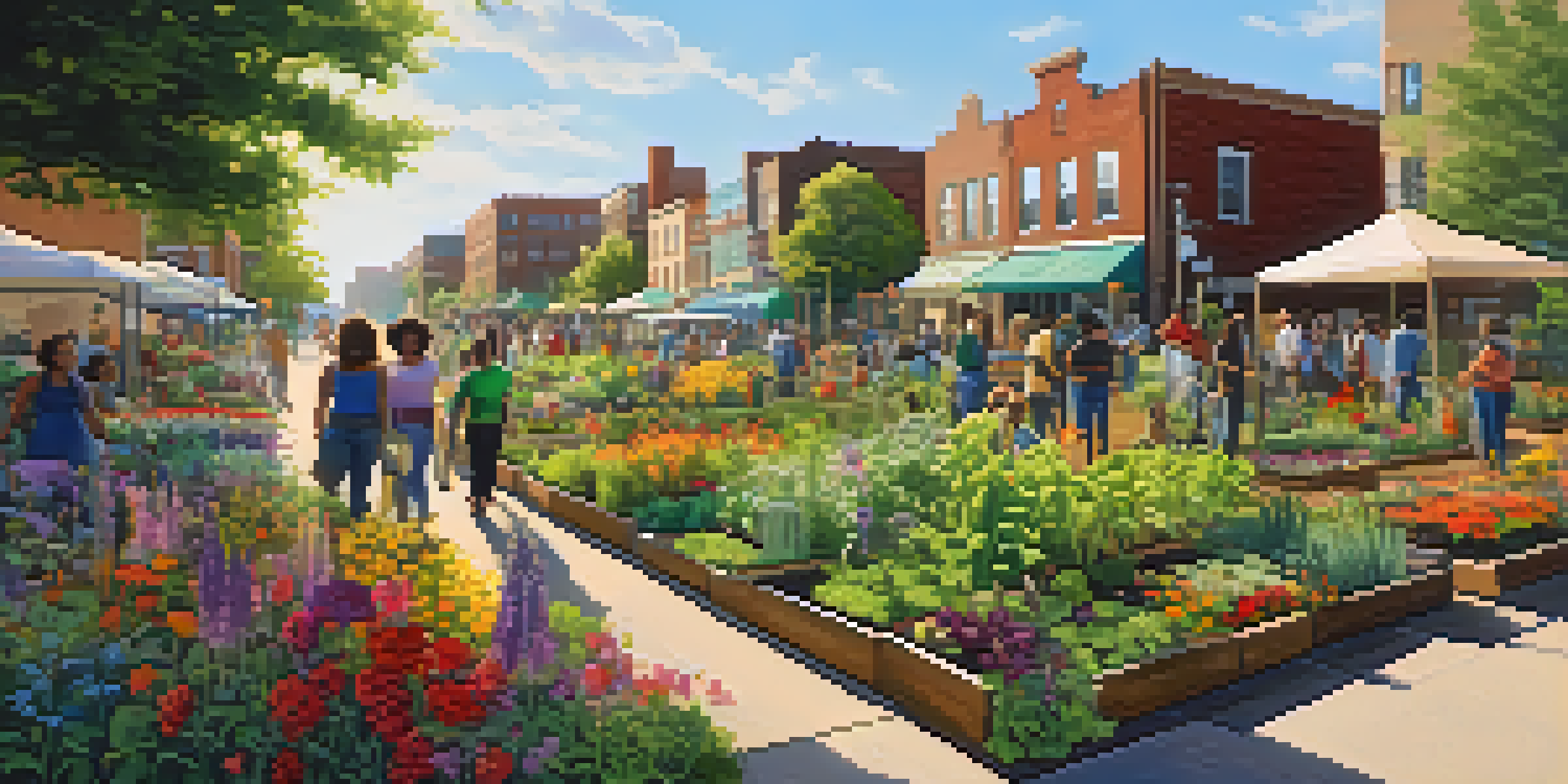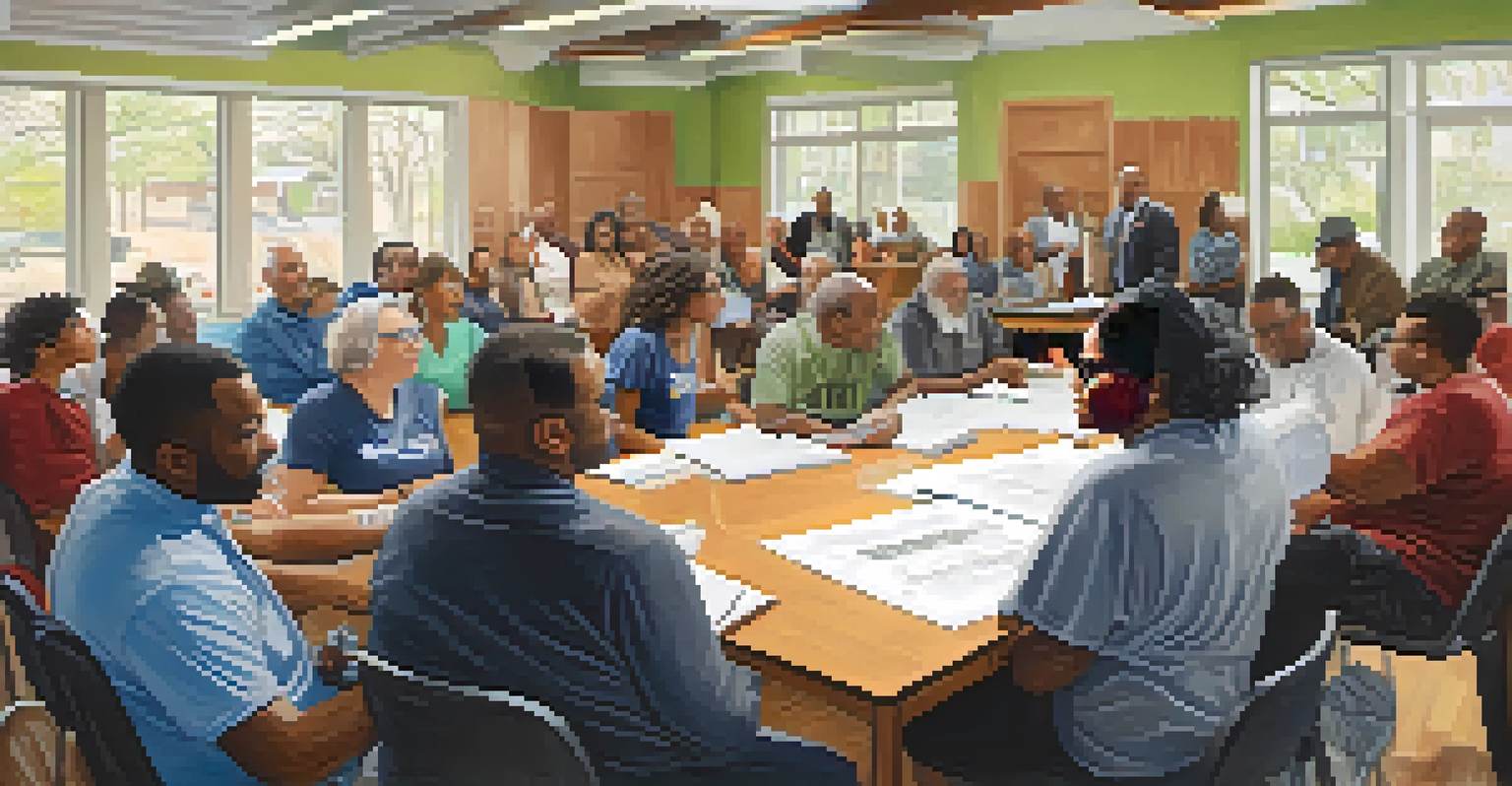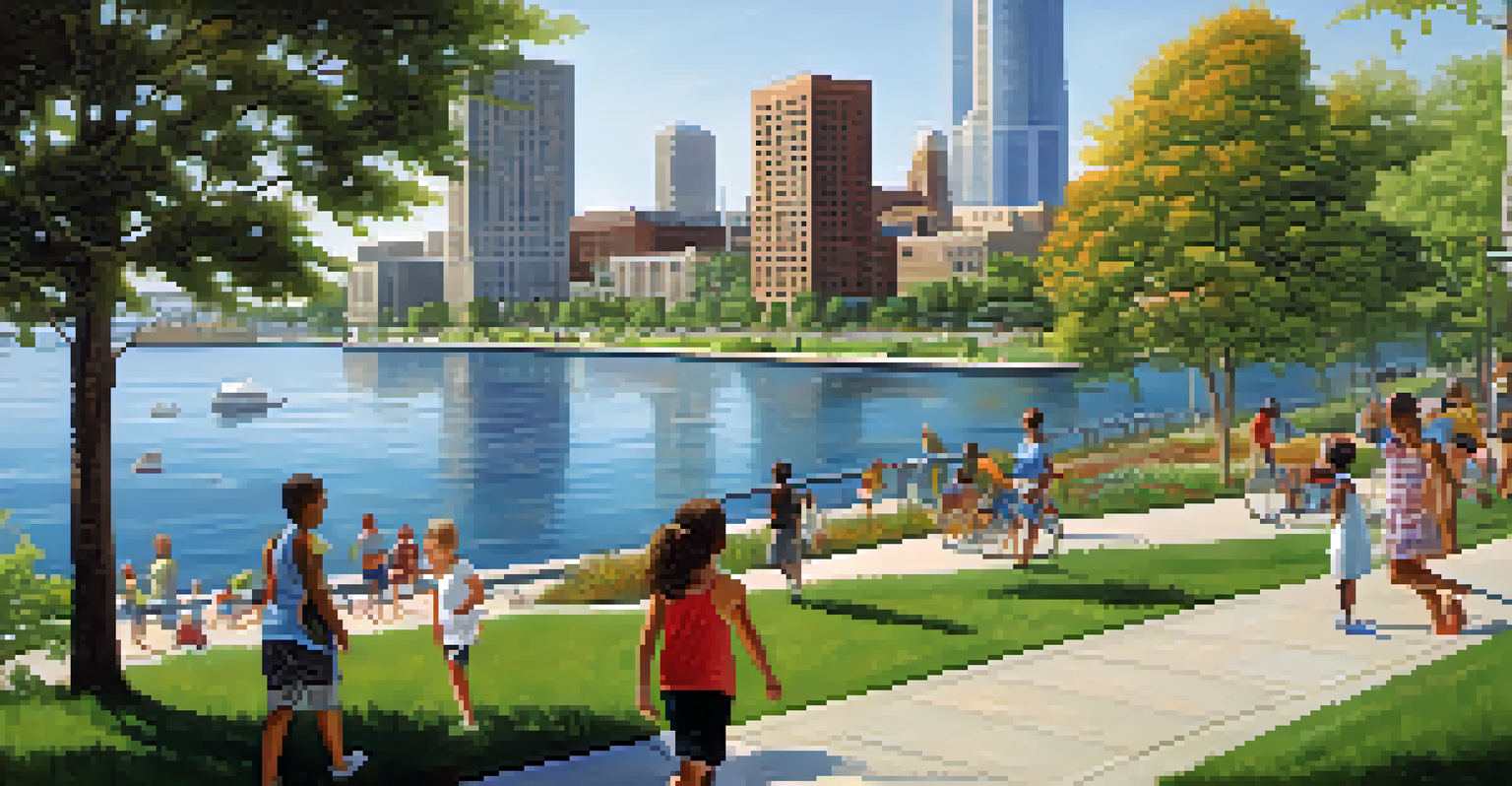Community Engagement in Detroit's Urban Revitalization Efforts

Understanding Urban Revitalization in Detroit
Urban revitalization refers to the process of improving neglected areas and enhancing the quality of life for residents. In Detroit, this means transforming abandoned spaces into vibrant communities filled with opportunity. It's not just about buildings; it's about the people and the culture that give life to these neighborhoods.
Community is much more than belonging to something; it’s about doing something together that makes belonging matter.
Detroit has faced significant challenges over the years, including economic downturns and population decline. However, recent years have seen a renewed interest in revitalizing the city, with community engagement playing a crucial role. This collective effort aims to create a sustainable future that reflects the values and needs of Detroit’s residents.
By involving the community in the decision-making process, revitalization efforts can address the specific issues that residents face, such as access to services and job opportunities. This not only fosters a sense of ownership but also builds trust between the community and local leaders.
The Role of Community Organizations
Community organizations serve as the backbone of Detroit's revitalization efforts, bridging the gap between residents and government initiatives. These organizations often have deep roots in the neighborhoods they serve, making them uniquely positioned to understand local needs. They organize events, provide resources, and advocate for residents to ensure their voices are heard.

For example, groups like the Detroit Collaborative Design Center work directly with communities to develop projects that reflect local aspirations. They often host workshops and brainstorming sessions, allowing residents to contribute ideas that shape the future of their neighborhoods. This collaborative approach fosters a sense of belonging and pride among participants.
Community Drives Revitalization
Community engagement is essential for transforming neglected areas in Detroit, ensuring that revitalization efforts reflect the needs and aspirations of local residents.
Moreover, these organizations often secure funding and resources to implement projects, from community gardens to public art installations. By harnessing the power of grassroots movements, they help create spaces that are not only functional but also resonate with the community's identity.
Successful Case Studies of Engagement
One notable example of community engagement in Detroit is the revival of the Detroit Riverfront. Once an area marred by neglect, this waterfront has been transformed into a bustling space for recreation and community gatherings. The Detroit Riverfront Conservancy worked closely with residents to ensure the designs met their needs, resulting in a vibrant hub for all to enjoy.
The best way to predict the future is to create it.
Another success story is the Brightmoor neighborhood, where community-led initiatives have turned vacant lots into thriving gardens and parks. Residents actively participated in planning and executing these projects, proving that local involvement can lead to sustainable change. These initiatives not only beautify the area but also promote environmental stewardship.
These case studies highlight the importance of collaboration between residents and organizations. When people are empowered to take part in decisions that affect their lives, the outcomes are often more meaningful and impactful.
Challenges in Community Engagement
While community engagement is essential, it does not come without challenges. One significant hurdle is ensuring that all voices are heard, especially those from marginalized groups who may feel overlooked. To address this, community leaders must actively seek out and include diverse perspectives in the planning process.
Additionally, there can be a disconnect between community desires and available resources. Sometimes, the ideas generated during community meetings may not align with budget constraints or city regulations, leading to frustration. It’s crucial for organizers to manage expectations while still advocating for what the community wants.
Organizations Bridge Gaps
Community organizations play a crucial role in connecting residents with government initiatives, advocating for local needs and fostering collaboration.
Moreover, building trust is an ongoing process that requires consistent effort. Past experiences of neglect or disillusionment can make residents skeptical about new initiatives. To overcome this, transparency and open communication are vital.
The Impact of Technology on Engagement
Technology has transformed how communities engage in Detroit's revitalization efforts. Social media platforms, for instance, allow residents to share their thoughts and ideas quickly, creating a dynamic dialogue. Online forums and surveys enable a broader range of participation, especially from those who may not be able to attend in-person meetings.
Moreover, various apps and digital tools have been developed to streamline communication between residents and local organizations. These resources help gather feedback efficiently, ensuring that the community's voice is considered in planning. This tech-savvy approach encourages more people to get involved and stay informed.
However, it’s essential to recognize the digital divide that exists in some neighborhoods. Not everyone has equal access to technology, which can marginalize certain groups. Therefore, combining traditional engagement methods with digital tools ensures that all community members can participate.
Future Directions for Community Engagement
Looking ahead, the future of community engagement in Detroit's revitalization efforts is promising. As more residents become aware of the importance of their involvement, we can expect to see even stronger grassroots movements. Education about civic participation is key to empowering citizens to take action.
Moreover, fostering partnerships between local businesses, organizations, and residents can create a more holistic approach to revitalization. When these groups collaborate, they can leverage resources and expertise, ultimately benefiting the entire community. This synergy is essential for creating sustainable and lasting change.
Technology Enhances Participation
Digital tools and social media have revolutionized community engagement in Detroit, making it easier for residents to voice their ideas and contribute to revitalization efforts.
Finally, continued investment in community engagement initiatives will be vital. As Detroit evolves, it’s crucial to ensure that revitalization efforts remain inclusive and representative of its diverse population. By prioritizing community involvement, Detroit can shape a future that reflects the aspirations of all its residents.
Conclusion: The Power of Community in Revitalization
In conclusion, community engagement is at the heart of Detroit's urban revitalization efforts. From grassroots organizations to individual residents, everyone has a role to play in shaping the future of their neighborhoods. This collaborative spirit not only enhances the physical landscape but also strengthens social bonds among citizens.
As we’ve seen through various case studies and examples, when communities come together, they can create meaningful change. The stories of transformation in places like the Detroit Riverfront and Brightmoor are testaments to the power of collective action. These success stories inspire other neighborhoods to take charge of their destinies.

Ultimately, the path forward for Detroit lies in continued collaboration and open dialogue. By prioritizing community engagement, the city can ensure that its revitalization efforts are not only effective but also reflective of the vibrant culture and spirit of its residents.